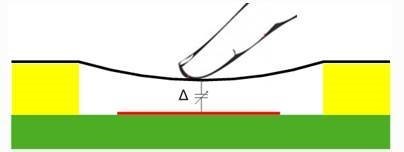Hi,
Inquiry about CapTIvate-Metal has been received from a customer.
There is a message that the gap should be formed as shown in the figure below.
Do I really need a gap?
Are there any comparison data between general capacitive touch solutions and metal touch solutions? (data such as recognition rate)
Thanks.
Regards,
MJ


